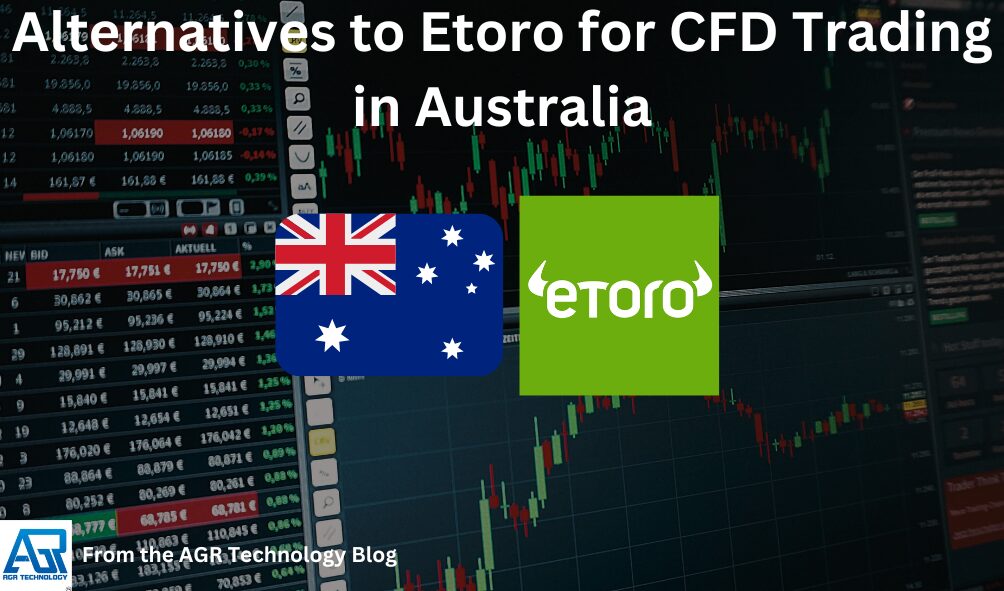Disclaimer: General information only. All kinds of investment (particularly trading CFDs, commodities, and FX) involve significant risk, including the possibility of losing more than the amount invested, as well as market volatility and liquidity hazards. Past performance does not guarantee future results. Most investors will find such operations unsuitable.
Top 5 Alternatives to eToro for CFD Trading July 2025
Australian traders seeking robust CFD trading platforms have multiple competitive alternatives to eToro that offer diverse trading capabilities and regulatory compliance. These platforms provide sophisticated trading experiences tailored to different investor preferences and skill levels.
CFD trading has become increasingly popular among Australian investors seeking flexible and diverse investment opportunities. While eToro has established itself as a prominent platform many traders are exploring alternative options that might better suit their specific trading needs and preferences.
The Australian CFD trading landscape offers multiple platforms with unique features designed to cater to different investor profiles. From comprehensive trading instruments to competitive fee structures these alternatives provide robust options for both novice and experienced traders looking to diversify their investment strategies. Traders can now choose from platforms that offer extensive asset classes comprehensive research tools and user-friendly interfaces.
Understanding the nuances of each CFD trading platform for Australians is crucial for making informed investment decisions. This guide will explore top-tier alternatives to eToro that meet the stringent regulatory standards of the Australian Securities and Investments Commission (ASIC) while providing competitive trading environments.
1) AvaTrade
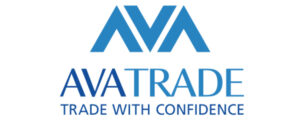
AvaTrade is an online forex and CFD broker, offering a wide range of instruments for trading including currencies, stocks, indices, commodities, and even cryptocurrencies. They cater to both beginners and experienced traders by providing various account types and educational resources.
AvaTrade serves over 400,000 global clients with a focus on user satisfaction and financial stability. They are committed to regulatory compliance, ensuring a secure trading environment for clients.
AvaTrade potentially offers competitive fees, with some account types featuring spread-based commissions. However, inactivity fees and potential withdrawal charges can add up. AvaTrade also uses spreads to make money on the difference between the buy and sell price.
As a result, AvaTrade could be an excellent choice for traders searching for a platform with a wide range of instruments and minimal costs. However, before you invest with AvaTrade, you should examine all connected expenses, including spreads and inactivity penalties.
- Commissions: There are typically no commissions on trades; instead, they benefit off the spread. However, some account types may incur commissions based on the instrument. Spreads are AvaTrade’s main source of revenue. Spreads depend on the instrument and market conditions; they might be competitive but widen during volatility.
-
Inactivity Fee: A $50 quarterly fee kicks in after 3 months of inactivity. This can add up for occasional traders
-
Other Fees: There may be fees for currency conversion (0.5%) and potential withdrawal fees depending on the withdrawal method
Pros
-
Low CFD fees and average forex fees
-
Negative balance protection
-
Offers popular MetaTrader platform and proprietary platform AvaTradeGO
-
Wide array of trading instruments, with over 19,000 traded assets such as stocks, currencies, commodities and indices
- Dedicated account manager for deposits over $1000 to help you trading
Cons
-
Inactivity fees kick in after 3 months
-
Some assets are only available for trading through the MetaTrader platform
- No support for the US at this stage so keep that in mind if your planning to travel there and run trades whilst overseas
2) Capital.com

Looking for a platform to trade cryptocurrency and other assets with no transaction fees? Look no further than Capital.com. With over 100 cryptocurrencies supported and 2x leverage available, you can trade quickly and affordably.
Furthermore, the platform is ASIC and FCA licenced, providing further protection through a fully working PC platform and a highly rated mobile app.
And if you need assistance, the dedicated account manager and great customer support team are available. Best of all, all deposits and withdrawals are free. Join Capital.com today and trade with confidence.
Key features of the Capital platform:
- Trade with assurance on Capital’s secure, licenced platform, which is governed by the FCA and ASIC
- The ability to trade more than 100 cryptocurrencies in addition to more conventional products like CFDs
- Capital offers a fully complete demo account that allows you to explore and play with real assets in real time.
- Enjoy free deposits and withdrawals using a variety of payment options, such as bank transfers, debit/credit cards, and more, for smooth and hassle-free transactions.
- Receive individualised assistance from a committed account manager who is on call 24/7.
- Enjoy the greatest trading experience with Capital’s intuitive desktop platform and well-regarded mobile app (4.7/5 on Google and Apple).
- You can feel secure knowing that Capital satisfies strict information security requirements thanks to its ISO 27001 certification.
Pros
- The quick and easy registration process makes it relatively quick to get started
- Multiple convenient deposit and withdrawal options are available
- Customer funds are kept in segregated accounts, ensuring the safety and security of the fund
- Extensive collection of training materials and research tools for market analysis and study
- Multilingual support is provided in 13 different languages
- Wide selection of trading instruments to choose from
Cons
- No investment programs, such as PAMM accounts or trade copying services, are offered to clients
3) CMC Markets
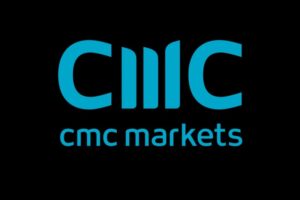
CMC Markets is a well-known global supplier of online CFD and forex trading, founded in 1989. They are headquartered in London and have a presence in Australia and the APAC region. CMC Markets is regulated by a number of authorities across the world, including the ASIC authority.
Their user-friendly website allows you to trade a variety of financial assets, such as currencies, stocks, indexes, and commodities. They are noted for their competitive spreads and cater to traders of all experience levels, with features that may appeal to both beginners and active traders.
CMC Markets CFD Fees
| Type of asset | Amount of instruments | Minimum spreads from the platform | Margins rates |
|---|---|---|---|
| Forex | 330+ | 0.7 points | 3.3% |
| Indices | 80+ | 0.3 points | 5% |
| Cryptocurrencies | 21 | 0.5 points | 50% |
| Commodities | 100+ | 0.3 points | 5% |
| Shares | 10,000+ | 0.10%1 | 20% |
| Exchange-traded funds (ETFs) | 1,000+ | 0.10%1 | 20% |
| Treasuries | 50+ | 1 point | 20% |
Source: https://www.cmcmarkets.com/en/cfds
Pros
-
Competitive forex fees
-
Innovative web and mobile platforms
-
Advanced research and educational tools
-
It comes with advanced tools and an excellent mobile app
Cons
-
Higher CFD fees
-
Some users reported a complex account creation process
4) Prime XBT
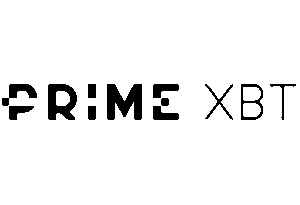
PrimeXBT is a versatile and unique trading platform that allows users to trade a variety of markets, such as cryptocurrency, forex, commodities, and indices. The platform, which was launched in 2018, is well-known for its user-friendly design, comprehensive charting capabilities, and high leverage. It stands out for providing cryptocurrency deposits, margin trading, and innovative features such as copy trading and competitive trading tournaments. While there are no cash deposit alternatives, users can load their accounts with cryptocurrencies like Bitcoin, Ethereum, and Tether.
Key Features:
- Wide Range of Markets: Trade in crypto, forex, commodities, and indices.
- Leverage: Access up to 100x leverage on some assets.
- Margin Trading: Trade with margin and amplify potential returns.
- Copy Trading: Copy strategies from successful traders.
- Advanced Charting: Customizable charts for technical analysis.
- Contests: Compete in trading contests for cash prizes and to hone skills.
Pros:
- High-leverage options
- Crypto deposits are available
- A user-friendly interface with powerful charting options
- Copy trading allows newcomers to get started quickly
- A unique contest element for competitive traders
- Deposits and withdrawals via cryptocurrency are processed quickly.
Cons:
- No Fiat Deposits: Australian users must buy crypto through external exchanges.
- Lack of Regulation: This could raise concerns for some traders, especially in highly regulated regions.
- Restricted Access: US and Canadian users are restricted from using the platform.
Important Notes for Australian Users:
- Crypto Funding: PrimeXBT is ideal for users already familiar with cryptocurrencies. Australians can easily fund their accounts with BTC, ETH, or USDT
- Regulatory Concerns: The lack of regulation could be a risk factor for some traders, as the platform isn’t overseen by major financial authorities
- No Fiat Support: You’ll need to convert AUD into crypto via an external exchange before depositing into PrimeXBT
Walk through of their deposit process:
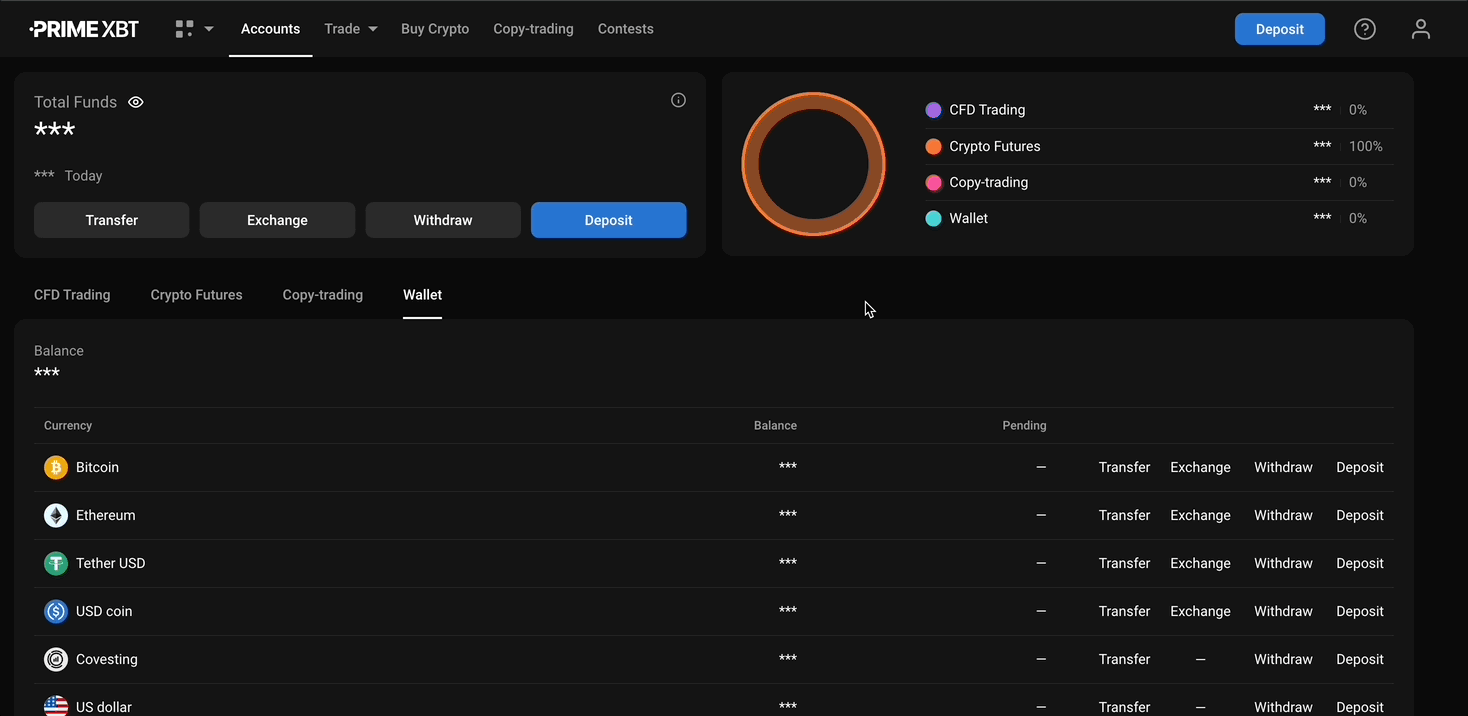
Overall, PrimeXBT is a reliable platform for both new and experienced traders, with sophisticated tools and high leverage chances. However, users should be aware of its limitations, such as the lack of fiat currency support and regulation, particularly if they are concerned about these issues.
5) IC Markets
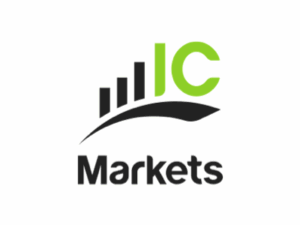
IC Markets is a top worldwide forex and CFD broker noted for its competitive trading conditions and fast execution times. IC Markets, founded in 2007 in Australia, has evolved to become a top alternative for traders looking for dependable and transparent trading solutions. It is overseen by ASIC, CySEC, and FSA Seychelles, which ensures investment protection and conformity with local regulations.
The broker provides access to a diverse range of financial assets, including forex, commodities, indices, bonds, and cryptocurrencies, for both individual and institutional clients. IC Markets has established a good name in the business by delivering high-quality trading platforms and exceptional customer service.
Fees:
- IC Markets provides various account kinds, including Raw Spread and Standard Accounts. Raw Spread accounts charge a commission of $3.50 per lot each trade + spread cost, but Standard accounts have spread markups of 0.8 pips and no commission
- Trading fees at IC Markets are relatively minimal, particularly for FX and CFD trading
- IC Markets does not charge an inactivity fee, which benefits traders who may leave their accounts idle for extended periods of time
- IC Markets offers leverage up to 1:30 for retail clients and 1:500 for professional clients, depending on the instrument traded
Pros:
-
Low forex fees
-
Little trading costs
-
Fast and easy account opening
-
Free deposit and withdrawal
-
Standard and raw spread accounts
Cons:
-
Limited product selection
-
No guaranteed stop-loss orders
-
Some educational resources may be basic for advanced traders
Understanding CFD Trading in Australia

CFD trading represents a sophisticated financial strategy enabling Australian investors to speculate on price movements across multiple markets. Traders access complex derivative instruments that facilitate speculation without direct asset ownership.
What Are CFDs?
Contracts for Difference (CFDs) are derivative financial products allowing traders to speculate on price fluctuations of underlying assets like forex, commodities, indices, and shares. Traders enter agreements with brokers to exchange the price difference between trade opening and closing points without acquiring physical ownership of the referenced asset.
Key characteristics of CFDs include:
- Derivative speculation mechanism
- No physical asset transfer
- Potential profit in rising and falling markets
- Leveraged trading capabilities
- Short and long trading positions possible
Legal and Regulatory Landscape
Australian CFD trading operates under strict regulatory frameworks established by the Australian Securities and Investments Commission (ASIC). Regulations aim to protect retail investors by mandating comprehensive risk disclosure and implementing protective measures against excessive financial exposure.
Regulatory considerations for Australian CFD traders:
- ASIC-mandated risk warnings
- Leverage restrictions
- Mandatory negative balance protection
- Transparent fee structures
- Comprehensive trader education requirements
Compliance with these regulations ensures Australian traders engage in CFD trading through secure, transparent, and professionally managed platforms that prioritize investor protection and market integrity.
Comparing Key Trading Platforms
| Platform | Tradeable Symbols | Social Trading | Copy Trading | Platform Types |
|---|---|---|---|---|
| XM | 5,000+ | Limited | Available | MetaTrader 4/5 |
| Eightcap | 1,000+ | No | Limited | MT4/MT5/Web |
| FOREX.com | 80+ Currency Pairs | No | No | Proprietary |
Essential Features to Consider
Top eToro alternatives for Australian CFD traders prioritize specific key attributes:
- Regulatory Compliance: ASIC-regulated platforms ensuring investor protection
- Trading Instruments: Diverse asset classes including forex, indices, commodities
- Platform Accessibility: Multiple trading interfaces (desktop/mobile/web)
- Fee Structures: Competitive spreads and transparent commission models
- Technical Analysis Tools: Advanced charting with multiple indicators
Each alternative platform offers unique advantages addressing different trader requirements. Australian investors must evaluate platforms based on individual trading strategies, risk tolerance, and technical preferences.
Factors like leverage limits, available markets, and platform usability significantly influence trading performance and overall investment experience. Comprehensive platform comparison allows traders to select the most suitable CFD trading environment.
Selecting the Right CFD Trading Platform

Choosing an appropriate CFD trading platform requires careful evaluation of multiple critical factors. Australian traders must assess platforms based on comprehensive performance metrics that align with their individual investment strategies and risk profiles.
Regulation and Safety
ASIC regulates CFD trading platforms in Australia, mandating strict compliance standards to protect investor interests. Key regulatory requirements include:
- Mandatory negative balance protection
- Transparent fee disclosure
- Risk warning notifications
- Minimum capital requirements for brokers
- Comprehensive trader education resources
Regulated platforms demonstrate commitment to investor security through:
- Client fund segregation
- Regular external financial audits
- Advanced encryption technologies
- Transparent operational practices
Trading Products and Instruments
Top CFD trading platforms typically offer diverse trading instruments across multiple asset classes:
| Asset Class | Typical Available Instruments |
|---|---|
| Forex | 50+ currency pairs |
| Indices | Global stock market indices |
| Commodities | Metals, energy, agricultural products |
| Stocks | International and Australian equities |
| Cryptocurrencies | Major digital currency pairs |
Fees and Commissions
CFD trading platforms typically charge fees through:
- Spread costs
- Overnight financing charges
- Inactivity fees
- Commission percentages on trades
- Currency conversion expenses
Competitive platforms offer:
- Transparent fee structures
- Low-spread trading options
- Reduced commission rates
- Volume-based pricing models
Trading Platforms and Tools
Essential trading platform features include:
- Mobile and desktop compatibility
- Advanced charting capabilities
- Real-time market data
- Risk management tools
- Automated trading options
- Multiple order types
- Practice/demo account availability
Traders should prioritize platforms with intuitive interfaces, robust technical analysis tools, and seamless execution speeds to optimize their CFD trading experience.
Factors to Evaluate When Choosing a CFD Broker
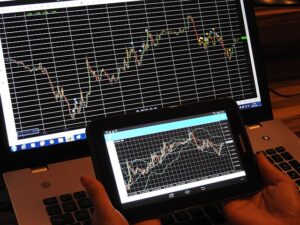
When selecting a CFD trading platform in Australia, investors must carefully assess multiple critical factors that impact trading performance and overall investment experience. The following key elements help traders make informed decisions about their preferred CFD broker.
Customer Support
Effective CFD broker customer support encompasses multiple communication channels:
- 24/7 multilingual support
- Live chat functionality
- Email response mechanisms
- Phone support
- Comprehensive FAQ sections
Responsive customer service ensures rapid problem resolution and enhances overall trading experience. Australian traders should prioritize brokers offering robust support infrastructure.
Educational Resources
Comprehensive educational resources distinguish top-tier CFD platforms:
- Interactive trading webinars
- Market analysis tutorials
- Risk management guides
- Technical analysis workshops
- Simulated trading environments
Platforms providing extensive educational content empower traders to develop advanced trading strategies and improve market understanding. Continuous learning remains crucial for sustainable CFD trading success.
Risks and Considerations in CFD Trading
CFD trading involves complex financial instruments with significant potential for both profits and losses. Traders must carefully evaluate the inherent risks and develop comprehensive strategies to protect their investment capital.
Understanding Trading Risks
CFDs present multiple critical risk factors for Australian traders. The primary risks include:
| Risk Type | Specific Characteristics |
|---|---|
| Market Volatility | Rapid price fluctuations can trigger unexpected losses |
| Leverage Exposure | Potential to lose more than initial investment |
| Counterparty Risk | Dependency on CFD provider’s financial stability |
| Complexity | Intricate product requiring advanced financial knowledge |
Traders encounter substantial financial exposure through CFD trading mechanisms. Price movements can rapidly impact investment positions, with market dynamics creating unpredictable trading environments. Inexperienced traders face higher probability of substantial financial losses due to limited understanding of complex trading instruments.
Risk Management Strategies To Consider
Effective risk management requires strategic implementation of protective measures:
- Implement strict stop-loss orders
- Diversify trading portfolio across multiple instruments
- Use minimal leverage
- Continuously educate yourself on market conditions
- Practice disciplined trading approaches
Traders can mitigate potential losses by setting predetermined exit points and limiting total investment exposure. Utilizing demo accounts allows practice without risking actual capital, enabling skill development and strategy refinement before diving in.
Suitability for Different Trader Levels
CFD trading demands varying levels of expertise:
| Trader Level | Recommended Approach |
|---|---|
| Beginner | Extensive education, demo trading, minimal investment |
| Intermediate | Balanced risk management, gradual capital allocation |
| Advanced | Sophisticated strategy implementation, comprehensive market analysis |
Advanced traders demonstrate deeper understanding of market complexities, enabling more nuanced risk assessment and strategic decision-making. Beginners must prioritize learning and conservative investment approaches to minimize potential financial risks.
Trading Strategies and Best Practices
Successful CFD trading hinges on implementing robust strategies that minimize risk and maximize potential returns. Traders must develop comprehensive approaches that integrate multiple analytical techniques and risk management principles.
Long vs Short Trading
Long and short trading represent fundamental strategies in CFD markets allowing traders to profit from both rising and falling asset prices. Long positions involve purchasing CFDs anticipating price increases while short positions enable profit generation when asset values decline.
Traders execute long strategies by:
- Opening positions expecting price appreciation
- Targeting assets with positive market sentiment
- Maintaining bullish market outlook
- Analyzing upward trending financial instruments
Short trading strategies involve:
- Selling CFDs anticipating price depreciation
- Targeting overvalued or declining assets
- Implementing bearish market perspectives
- Identifying potential market corrections
Diversification Approaches
Diversification reduces portfolio risk by spreading investments across multiple asset classes and markets. Australian CFD traders can minimize exposure through strategic allocation strategies.
Diversification techniques include:
- Distributing capital across different market sectors
- Trading multiple asset types: forex, indices, commodities
- Limiting individual position sizes
- Implementing uncorrelated trading instruments
- Balancing high-risk and low-risk investments
Technical and Fundamental Analysis
Comprehensive market analysis combines technical and fundamental approaches to inform trading decisions. Technical analysis examines historical price movements and statistical trends while fundamental analysis evaluates economic indicators and market conditions.
Technical analysis strategies involve:
- Studying price charts
- Identifying trend patterns
- Utilizing technical indicators
- Analyzing support and resistance levels
- Implementing mathematical modeling
- Economic data evaluation
- Corporate financial statements
- Geopolitical events
- Macroeconomic trends
- Industry-specific developments
Taxation and Compliance
CFD trading in Australia involves specific tax obligations and regulatory compliance that traders must understand to maintain legal and financial integrity. Navigating the complex landscape of taxation requires careful attention to Australian Taxation Office (ATO) guidelines and reporting standards.
Australian Tax Implications
CFD trading profits are taxable income in Australia with specific classification based on trading frequency and intent.
Reporting Requirements
Australian traders must accurately document and report CFD trading activities through comprehensive financial records. Essential reporting elements include:
- Detailed transaction logs
- Profit and loss statements
- Capital gains calculations
- Broker statements
- Supporting documentation for each trade
Financial Reporting Obligations
Financial reporting for CFD trading encompasses multiple regulatory frameworks. Key obligations include:
- Annual tax return submission
- Accurate capital gains/losses declarations
- Transparent income reporting
- Compliance with ASIC regulatory standards
- Potential quarterly business activity statements for professional traders
Professional traders must provide more extensive financial documentation, potentially requiring consultation with registered tax professionals to ensure full compliance with Australian financial regulations. You should speak with your accountant or financial advisor to get expert advice on best ways to lodge returns and maintain required records according to relevant rules.
Key Takeaways
- Diverse CFD Trading Alternatives Exist: Australian traders have multiple robust platforms beyond eToro, offering unique features, competitive fee structures, and comprehensive trading instruments tailored to different investor profiles.
- Key Platform Selection Factors: Traders should evaluate CFD platforms based on regulatory compliance, available trading instruments, platform accessibility, fee structures, technical analysis tools, and individual risk tolerance.
- Risk Management is Essential: Successful CFD trading requires implementing strategic risk management techniques, including diversification, using stop-loss orders, limiting leverage, and continuously educating oneself about market dynamics.
- Tax Compliance Matters: Australian CFD traders must accurately report trading income, maintaining detailed transaction records and understanding their tax obligations based on their trading classification (casual, speculative, or professional trader).
- Continuous Learning is Key: Utilizing educational resources, practicing with demo accounts, and staying informed about market trends are crucial for developing effective CFD trading strategies and minimizing potential financial risks.
Conclusion
Selecting the right CFD trading platform requires careful consideration of multiple factors. Australian traders must prioritize regulated platforms that offer robust features competitive pricing and comprehensive risk management tools.
By thoroughly evaluating alternatives to eToro traders can discover platforms better aligned with their individual investment strategies. The key lies in understanding personal trading goals and matching them with platforms that provide optimal trading experiences.
Ultimately successful CFD trading demands continuous learning adaptability and a strategic approach. Investors who invest time in research and remain disciplined in their trading practices will be better positioned to navigate the dynamic landscape of CFD trading in Australia.
Other content you may like on our blog:
Best Cryptocurrency exchanges for Australians
How to buy Bitcoin in Australia
Leading business loan providers for Australians
Frequently Asked Questions
What is CFD Trading?
CFD trading is a derivative financial strategy where investors speculate on price movements of underlying assets like stocks, commodities, and currencies without owning them physically. Traders can profit from both rising and falling markets by predicting price changes. These financial instruments offer leverage, allowing traders to open larger positions with a smaller initial investment. However, CFD trading also carries significant risk and requires careful risk management strategies.
Are CFDs Legal in Australia?
Yes, CFD trading is legal in Australia and regulated by the Australian Securities and Investments Commission (ASIC). The regulatory body ensures investor protection by implementing strict guidelines, including mandatory risk warnings, leverage restrictions, and negative balance protection.
How Much Money Do I Need to Start CFD Trading?
Minimum deposit requirements vary across platforms, typically ranging from $50 to $500. Beginner traders are recommended to start with modest amounts, to minimize financial risk. Many platforms offer low-entry barriers and demo accounts for practice. Consider factors like platform fees, leverage options, and trading instruments when selecting a CFD trading platform. Consider starting conservatively and gradually increase investment as you gain experience.
What Are the Risks of CFD Trading?
CFD trading involves significant financial risks, including potential substantial losses due to market volatility and leveraged positions. Key risks include rapid market movements, high leverage exposure, counterparty risks, and complex financial instruments. Traders can mitigate risks by implementing stop-loss orders, diversifying portfolios, using minimal leverage, and continuously educating themselves. Beginners should consider starting conservatively and develop comprehensive risk management strategies before engaging in advanced trading techniques.
Which Platforms Are Best for CFD Trading in Australia?
Top CFD trading platforms in Australia include Capital.com, FP Markets, Pepperstone, and Eightcap. These platforms offer competitive fees, diverse trading instruments, robust regulatory compliance, and user-friendly interfaces. Key considerations when selecting a platform include ASIC regulation, trading product range, fee structures, technical analysis tools, and customer support. Traders should compare platforms based on their individual trading strategies, risk tolerance, and investment goals.
How Are CFD Profits Taxed in Australia?
CFD trading profits are taxed based on the trader’s classification: casual, speculative, or professional. Casual traders may have different tax treatments compared to professional traders. Profits are typically considered capital gains or income, depending on trading frequency and intent. Traders must maintain accurate transaction records and profit/loss statements. Consulting a tax professional is recommended to ensure proper compliance with Australian Taxation Office guidelines and to understand specific tax obligations.
Can Beginners Successfully Trade CFDs?
Beginners can trade CFDs successfully by prioritizing education, starting conservatively, and implementing robust risk management strategies. Key recommendations include using demo accounts, understanding market dynamics, starting with small investments, and gradually developing trading skills. Platforms offering comprehensive educational resources, user-friendly interfaces, and low minimum deposits can help beginners gain confidence. Continuous learning, disciplined approach, and realistic expectations are crucial for long-term CFD trading success.
Note: This is not financial advice and is just designed to provide general information. While we run our own checks and assess each company included on our website, we may not have covered all options. If you decide to apply for a product, you will interact directly with the vendor, not AGR Technology. AGR Technology suggests that you read the appropriate PDS or offer documents before accepting any financial product offer to assess whether the products are suitable for you. Target Market Determinations are available on the provider’s website.
AGR Technology may receive a commission on sales generated by partner links on this page, but this has no influence on our opinions or evaluations and is completely free of charge to you. While we make every attempt to keep our content up-to-date this should not be taken as financial advice, be sure to seek professional advice if required.
Factors considered when writing this article:
We set criteria for picking loan platforms to analyse, such as reputation, services offered, user base, regulatory compliance, types of functionality available and the years of operation along with browsing the respective websites to validate they have licences and compliance to operate in Australia, as well as other things like KYC protocols and contacting the companies.
Checked each platform for user-friendly design interfaces to ensure platforms are straightforward for beginners and more experienced customers to grasp. We obtained information about each company by visiting their separate websites, signing up for an account, reading user reviews, and looking for recent news or events related to the platforms.
Source(s) cited:
Legal and Important information [Online]. Available at: https://www.cmcmarkets.com/en-au/important-information (Accessed: 30 December 2024).
PrimeXBT Terms and conditions – v.6 .docx [Online]. Available at: https://primexbt.com/assets/documents/pdf/primexbt/terms-and-conditions.pdf?rev=ccd29454 (Accessed: 30 December 2024).
“Legal Documents” PrimeXBT Legal Centre, primexbt.com/legal-terms. Accessed 30 Dec. 2024.
“Regulation & Licences” PrimeXBT Legal Centre, primexbt.com/regulations. Accessed 30 Dec. 2024.
“ASIC Regulations” CMC Markets, www.cmcmarkets.com/en-au/asic-regulations. Accessed 30 Dec. 2024.
QR code of this page for mobile:


Alessio Rigoli is the founder of AGR Technology and got his start working in the IT space originally in Education and then in the private sector helping businesses in various industries. Alessio maintains the blog and is interested in a number of different topics emerging and current such as Digital marketing, Software development, Cryptocurrency/Blockchain, Cyber security, Linux and more.
Alessio Rigoli, AGR Technology
![logo-new-23[1] logo-new-23[1]](https://agrtech.com.au/wp-content/uploads/elementor/thumbs/logo-new-231-qad2sqbr9f0wlvza81xod18hkirbk9apc0elfhpco4.png)
